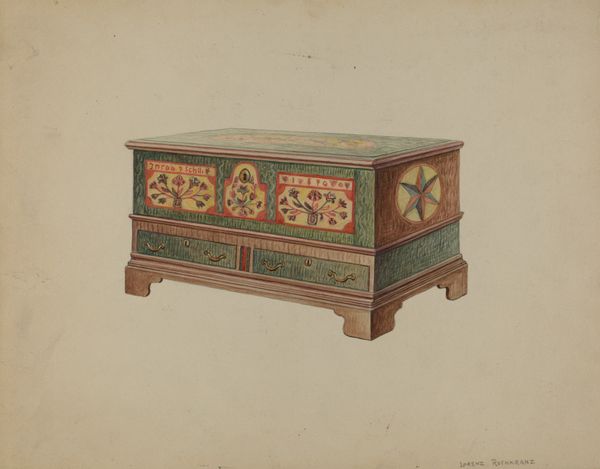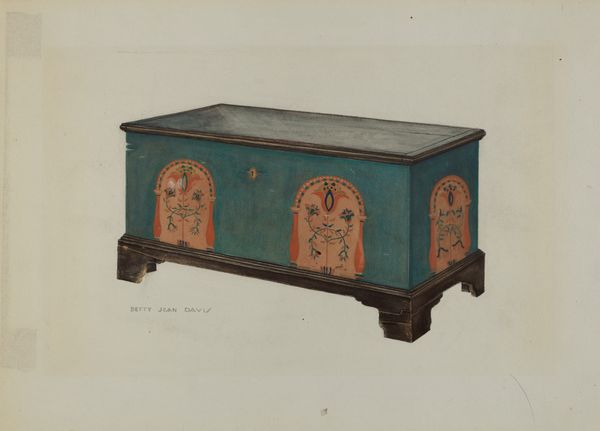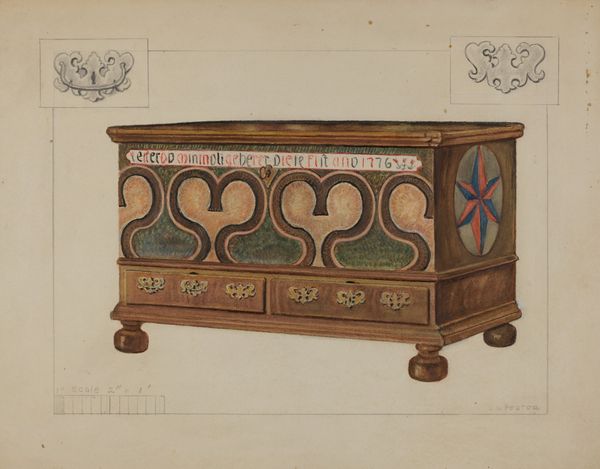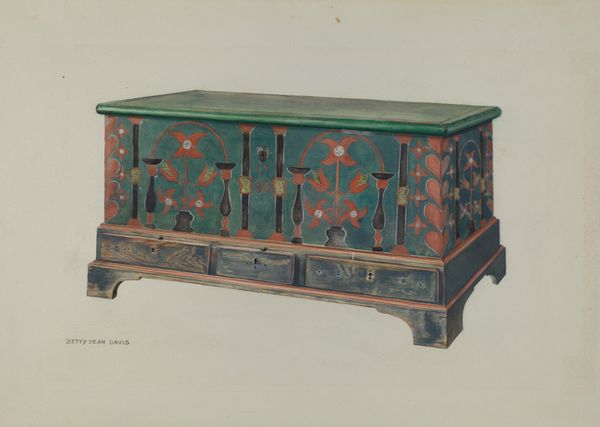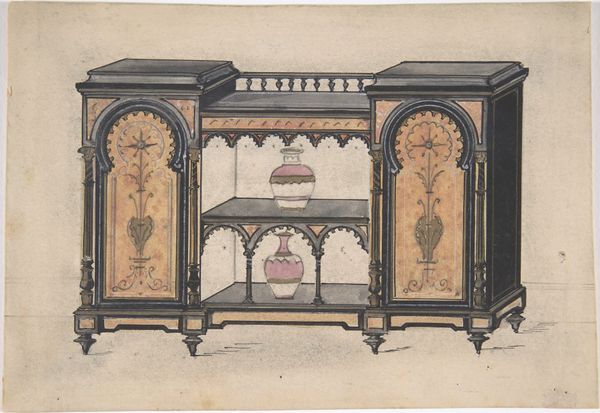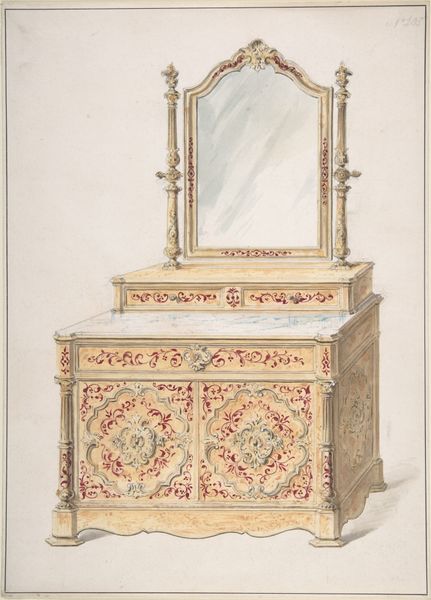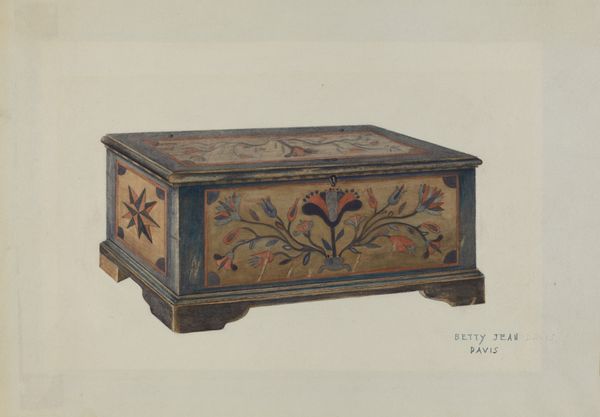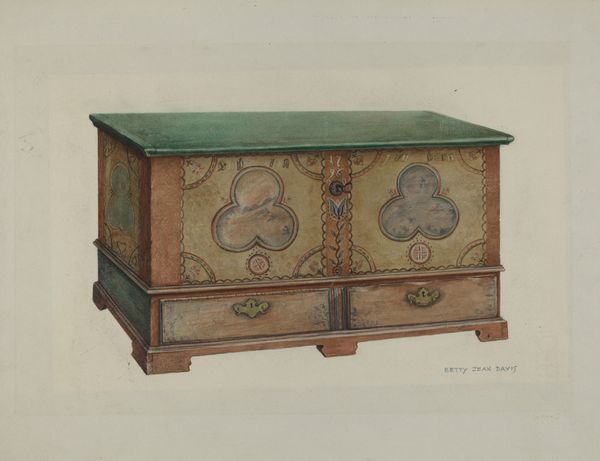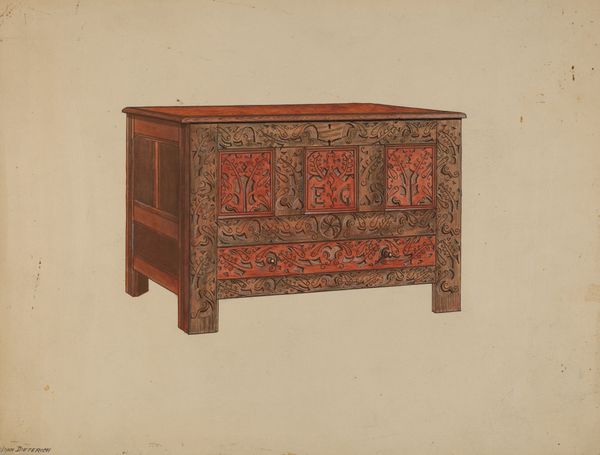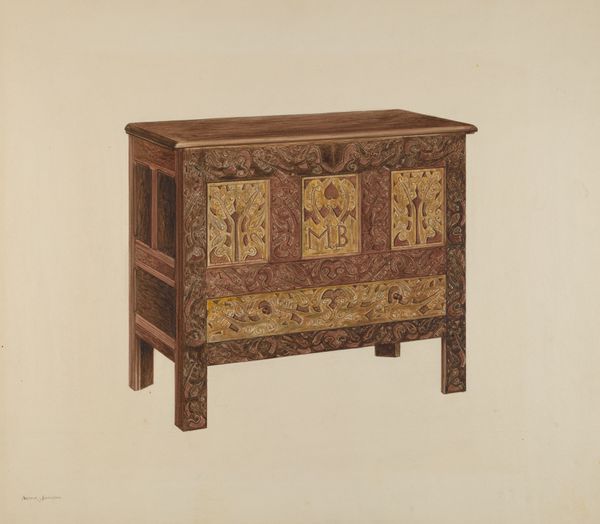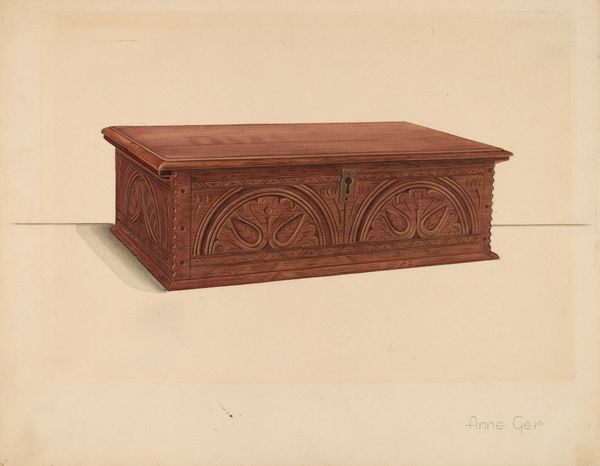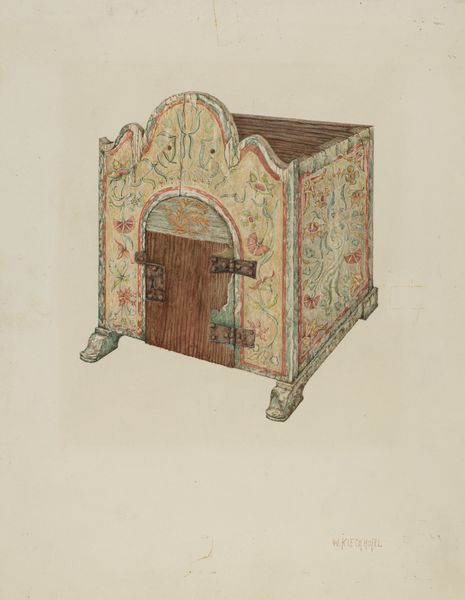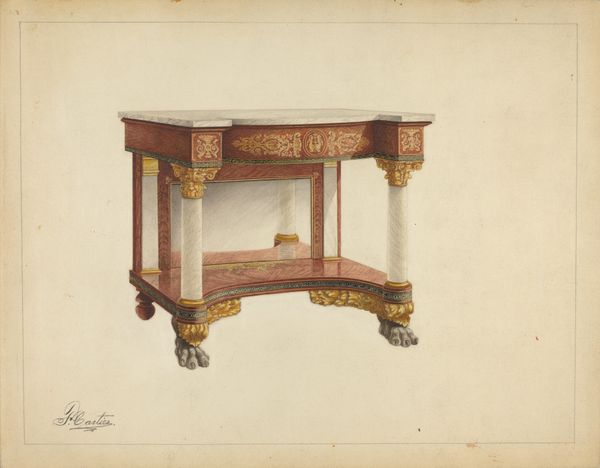
drawing, mixed-media, watercolor
drawing
mixed-media
landscape
watercolor
folk-art
watercolour illustration
decorative-art
Dimensions: overall: 22.6 x 28.9 cm (8 7/8 x 11 3/8 in.) Original IAD Object: 24 1/2" high; 52 1/2" wide; 23 1/4" deep
Copyright: National Gallery of Art: CC0 1.0
Curator: This work before us depicts a Pa. German Dower Chest, believed to be from around 1937. It’s rendered through mixed media, watercolor, and drawing, and signed by a John Dieterich. Editor: My first impression is that this piece radiates a sense of crafted warmth, with folk-art sensibility— it feels nostalgic and meticulously patterned. Curator: Precisely! Dower chests such as this held significant cultural importance, acting as repositories for a young woman’s trousseau, containing linens, clothing, and other handmade items representing her readiness for marriage and household establishment within her community. Editor: So, more than a piece of furniture, this would’ve been a repository of tangible goods, crafted skills, and familial expectations surrounding women, labor, and perhaps even property! Are there traces of its journey, materials, or makers in local historical records, reflecting a deeper network of artisans and consumers involved in its creation? Curator: Indeed. Decorative elements, especially the peacock motif and stylized flowers, tell a story about artistic traditions being adapted for broader consumption and folk interpretation, deviating from purely utilitarian objecthood. Consider how the techniques—watercolor, ink drawing—blend “high art” processes with “low craft” expression to construct identity. Editor: And thinking historically, pieces like this were, and continue to be, signifiers within the heritage and regional identity narratives. These kinds of objects get prominently displayed, and thus, reproduced across generations. The art historical context provides critical clues for our understanding, suggesting not only regional uniqueness, but its continued commodification in modern exhibitions and museums. How might that history shape our reading of this specific chest, do you think? Curator: I would argue that examining it with materialist perspective also challenges traditional art definitions by demonstrating that practical items possess aesthetic, narrative value reflecting its cultural use. This then contributes valuable dimensions in contemporary socio-historical settings, adding to its meaning over the course of time. Editor: Absolutely. Together, they tell a richer, more dynamic tale than either could alone, illuminating the power of craftsmanship and of history within culture, community and memory.
Comments
No comments
Be the first to comment and join the conversation on the ultimate creative platform.
